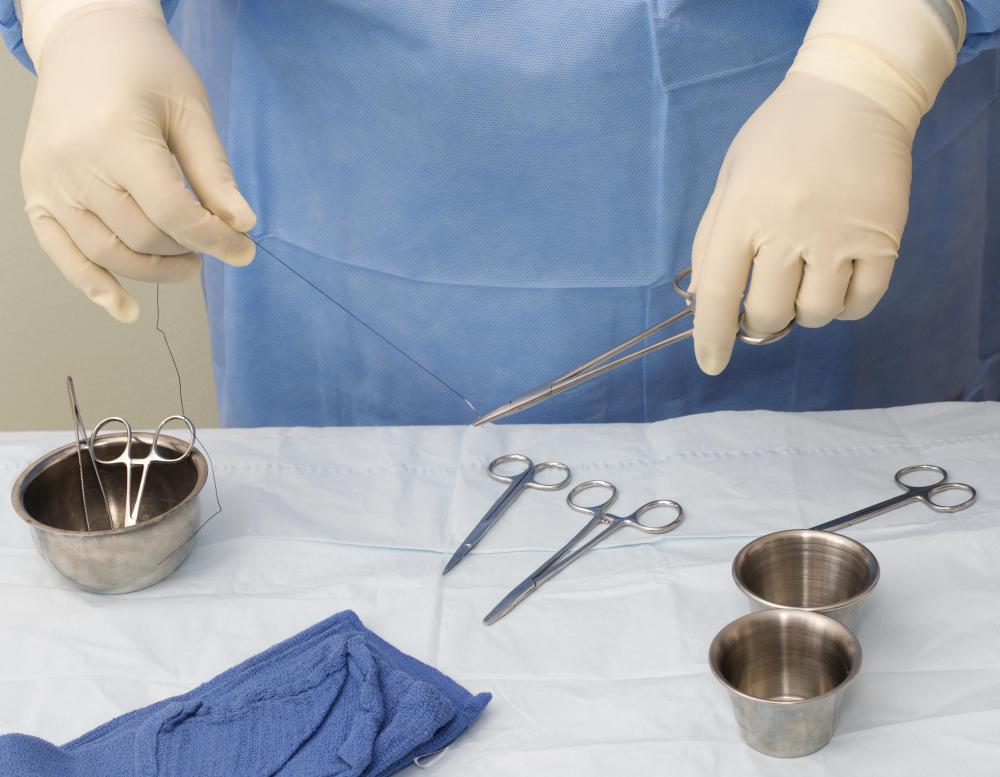At WiseGEEK, we're committed to delivering accurate, trustworthy information. Our expert-authored content is rigorously fact-checked and sourced from credible authorities. Discover how we uphold the highest standards in providing you with reliable knowledge.
What Is a Corner Stitch?
A corner stitch sutures the corner of a tissue flap in place with minimal risk to the blood supply. It takes the form of a U, with one tip of the U placed in the opposite tissue, the body of the letter passing through the tissue flap under the skin, and the other tip emerging on the other side. These stitches are visible as two dots, marked by knots, with the bulk of the stitch hidden underneath the skin. In addition to being useful for angled or Y-shaped wounds, the corner stitch can also be valuable with cosmetic stitches, where the goal is to reduce scarring and promote even, clean healing.
This type of suture is a variation on the mattress stitch, a common and widely used choice. Mattress stitches can retain tension to keep wounds closed firmly as they heal. This can be a disadvantage because it may promote scarring, and can cut off the supply of blood if the stitches are located near the corner of a skin flap. Corner stitches reduce this risk, and can also be used with complex flaps where multiple pieces of tissue meet.

A variety of suture materials can be used, and the best choice largely depends on both the location and the type of injury. The practitioner can select a prethreaded needle of the right size with an appropriate suture, or may thread a needle manually, depending on personal preference. Before placing any stitches, local anesthetic can be used to numb the site if the patient is conscious. To reduce the chance of infection, the wound can be thoroughly cleaned before carefully inspecting the tissue flaps to decide on the best suture placement.

Placement of a corner stitch starts on the tissue opposite the point of the skin flap, where the knot can act as an anchor. The needle can be carefully placed and passed beneath the surface of the skin to reach the skin flap, looping around so it exits the other side. Then, the needle can be passed beneath the tissue at the point where the flap meets the rest of the skin, and pushed out to form another knot to anchor the corner stitch in place. Placement is critical to make sure the flap is not pulled out of position, and to keep the tissue stable without straining it.

The blood supply is least likely to be disrupted with this kind of stitch, which increases the chance of smooth healing with even margins along the break in the skin. Tension is also relatively low, and this can keep scarring minimal. While small dots may be visible there the knots rested during healing, they should be hard to spot, and may be close to invisible if the sutures are removed in a timely fashion. For this reason, the corner stitch can be especially useful in places where the healed wound will be seen, like the face.
AS FEATURED ON:
AS FEATURED ON:













Discuss this Article
Post your comments